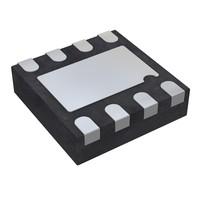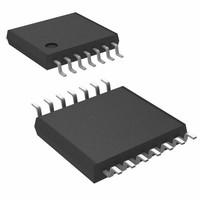Electric motors and generators are widely present in our production and daily life, and they hold significant importance for people. The stator, as an essential component of an electric motor, greatly influences its performance. So, what is a stator? This article will provide you with a detailed explanation of the definition and function of a stator. Additionally, it will help you understand the differences between a stator and a rotor.
What is a stator

Stator refers to the stationary component in an electric motor or generator. It is the part of the motor or generator that remains fixed while the rotor (the rotating part) spins. The stator is typically composed of a series of coils or windings that generate or receive magnetic fields to facilitate the operation of the motor or generator.
In an electric motor, the stator serves to produce a rotating magnetic field when an electric current flows through its coils. This magnetic field interacts with the magnetic field produced by the rotor, resulting in the generation of force and torque that drives the rotation of the motor.
In a generator, the stator acts as the component that receives the magnetic field produced by the rotor. As the rotor rotates, the changing magnetic field induces an electric current in the coils of the stator, generating electrical energy.
The coils of the stator are typically made of conductive wire and may have complex winding configurations to achieve the desired electromagnetic characteristics. The design and specifications of the stator may vary depending on the specific application and requirements, such as motor power, speed, and power supply type.
Functions
The stator of an electric motor, as the core component, plays a crucial role in converting electrical energy into mechanical energy. Its quality and performance directly impact the motor's efficiency and lifespan. If the stator of an electric motor malfunctions, it directly affects the motor's performance and may result in equipment damage and operational disruptions.
Applications
Power Tools
In power tools, the stator is primarily used to drive the motor's rotation. Examples include electric drills, hammers, saws, grinders, etc. These tools have a motor component, and the stator is one of the core parts of the motor. The stator and rotor work together to drive the operation of the power tool.
Home Appliances
In household appliances, the stator is also an important component of the motor. Examples include vacuum cleaners, washing machines, fans, electric doors, etc. The stator generates a magnetic field to drive the motor's rotation, enabling the functionality of these household appliances.
Transportation Equipment
In the field of transportation, the stator also plays a significant role. For instance, electric cars, electric bicycles, etc., have motors that include a stator component. The stator drives the rotation of the wheels in these vehicles.
Working principle
The stator of an electric motor is the core component consisting of a laminated iron core and windings. The stator iron core is typically made of silicon steel sheets to reduce magnetic and iron losses. The hollow portion of the iron core is used to house the stator windings. The stator windings are usually made of copper wire, and the number and arrangement of the windings vary depending on the operating principles of different types of motors. When the motor is energized, the windings generate a magnetic field that interacts with the rotor, converting electrical energy into mechanical energy and driving the motor's operation.
Causes and maintenance methods of motor stator failure
The causes of stator faults in an electric motor can include winding open or short circuits, copper wire aging, insulation damage, and more. If a stator fault is detected, it should be promptly repaired or replaced. The specific repair methods include:
1. Inspect the contact between the stator iron core and the windings. If there is poor electrical contact, clean and repair it promptly.
2. Inspect the copper wires in the windings. If there is aging, damage, or short circuits, replace them promptly.
3. Inspect the insulation layer of the windings. If there is damage or aging, replace it promptly.
How to test a stator
Testing a stator typically involves measuring various electrical parameters to assess its functionality and identify any potential issues. Here are some common methods for testing a stator:
- Visual Inspection: Begin by visually inspecting the stator for any signs of physical damage, such as cracks, worn-out insulation, or loose connections. Ensure that the windings are intact and the stator is clean and free from debris.
- Continuity Test: Use a multimeter set to the continuity or resistance mode to check for electrical continuity in the stator windings. Measure the resistance between each phase of the stator windings to ensure there are no open circuits or shorts.
- Insulation Resistance Test: Perform an insulation resistance test to assess the quality of the insulation between the stator windings and the stator core. Use a high-voltage insulation tester to measure the insulation resistance. Low readings could indicate insulation breakdown or moisture ingress.
- Grounding Test: Check for any grounding issues by measuring the resistance between the stator windings and the stator core. A low resistance reading could indicate a grounding problem that needs to be addressed.
- Voltage Output Test: Connect an AC voltage source to the stator windings and measure the output voltage using a voltmeter. Compare the measured voltage with the specifications provided by the manufacturer to ensure it falls within an acceptable range.
- Phase Imbalance Test: Measure the voltage and current in each phase of the stator windings to check for any significant imbalances. Significant variations could indicate problems such as unequal winding resistance or shorted turns.
- Load Testing: Apply a load to the stator, either by mechanically coupling it to a motor or connecting it to a load bank, and monitor its performance. Assess factors such as voltage regulation, temperature rise, and overall stability under load conditions.
It is important to consult the manufacturer's guidelines and specifications for specific testing procedures and acceptable ranges of values. Additionally, if you are unsure or lack the necessary expertise, it is recommended to consult a professional technician or electrician with experience in stator testing.
ALSO READ: What is a Blower Motor Resistor? And How do You Test It?
Stator vs Rotor
Stator
The stator is a core component of an electric motor or generator, consisting of the stator iron core, stator windings, and the motor housing. The stator iron core is typically made of laminated silicon steel sheets to reduce magnetic and iron losses. The hollow portion of the iron core is used to house the stator windings. The stator windings are usually made of copper wire, and the number and arrangement of the windings vary depending on the operating principles of different types of motors. When the motor is energized, the windings generate a magnetic field that interacts with the rotor, converting electrical energy into mechanical energy and driving the motor's operation. The primary function of the stator is to generate a rotating magnetic field.
Rotor
The rotating part of an electric motor is called the rotor. The rotor core and rotor windings are part of the rotor, and the rotor windings are excited by a direct current power source. The rotor core is made of a cylindrical iron core with a semicircular slot on its outer surface. Copper or aluminum conductors are placed in the slot, and the ends of the conductors are short-circuited with the help of aluminum or copper rings. The main function of the rotor is to be cut by magnetic lines of force in a rotating magnetic field, thereby generating (outputting) electric current.
The stator generates a rotating magnetic field through a three-phase power supply. If the rotor is in a static state, electromagnetic forces will be induced in the rotor due to electromagnetic induction. Due to the variable magnetic field, electromagnetic induction induces an electromotive force in the current-carrying conductor, resulting in current induction in the rotor, which causes the rotor to move.

Differences
The stator is the stationary part of the machine, while the rotor is the movable part. The stator consists of the stator iron core, stator windings, and the frame. The rotor consists of the rotor iron core and the excitation windings. The stator windings are supplied with three-phase power, while the rotor is excited by a direct current power source. The arrangement of the stator windings is more complex compared to the rotor. The stator windings are highly insulated as they are exposed to high voltages, whereas the rotor has lower insulation requirements. In comparison to the excitation windings, the stator windings are larger and capable of carrying higher currents. Since the stator is fixed, it has a better cooling system compared to the rotor. The rotor experiences lower friction losses due to its lighter weight compared to the stator.
The stator is the known static part of the motor, while the rotating part is called the rotor. The rotor is placed within the stator core, and the three-phase power is provided to the stator windings, generating a rotating magnetic field. As a result of the interaction between the rotor and stator fields, electromotive force is generated.









Comments
0 Comments